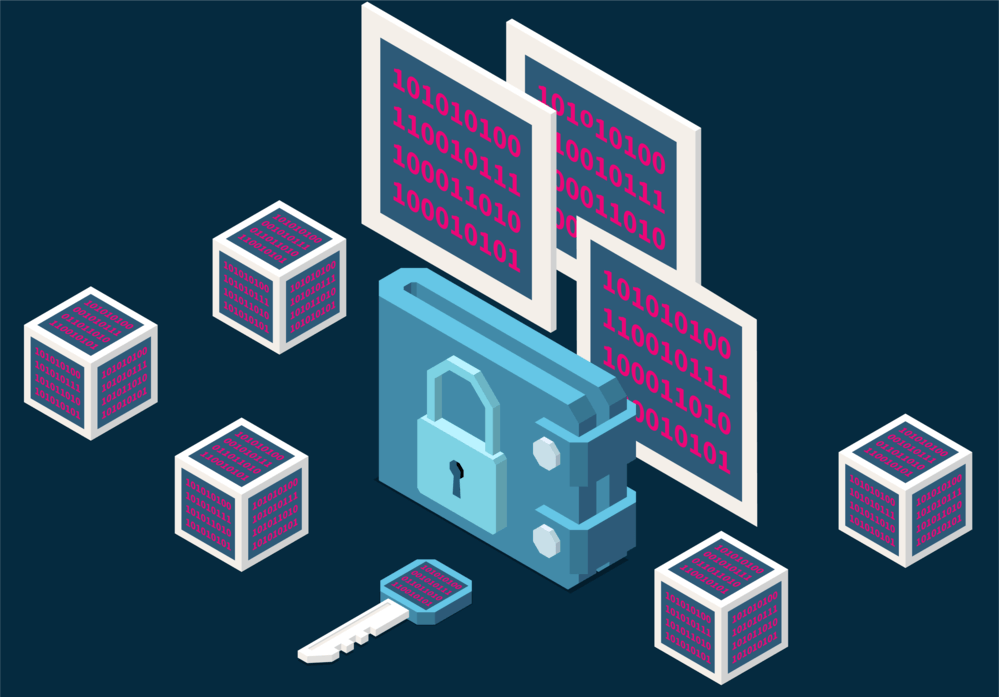Blockchain Infrastructure: The Key to Blockchain Technology Success
Blockchain technology has come a long way since its inception in 2008. Today, it is used in various industries and applications, ranging from finance to supply chain management, and even gaming. However, the success of blockchain technology largely depends on its infrastructure. Blockchain infrastructure refers to the underlying technical framework that supports the functioning of blockchain networks. In this article, we will discuss what blockchain infrastructure is, the types of blockchain infrastructure, why blockchain needs an infrastructure, and how to build a blockchain infrastructure.
1. What is Blockchain Infrastructure?
Blockchain infrastructure comprises the technical elements that make up a blockchain network. It is the backbone of the blockchain, consisting of nodes, miners, smart contracts, wallets, and other technical components that enable the blockchain to function efficiently and securely. The blockchain infrastructure can be likened to the infrastructure of a city, consisting of roads, buildings, water supply, electricity, and other utilities that support the functioning of the city.

2. Types of Blockchain Infrastructure
There are different types of blockchain infrastructure, and they are categorized based on the type of blockchain they support. Here are the most common types of blockchain infrastructure:
A. Public Blockchain Infrastructure
Public blockchain infrastructure is open to anyone and everyone. It is decentralized, meaning there is no central authority controlling the network. The infrastructure is designed to be tamper-proof, immutable, and transparent. Public blockchain infrastructure is ideal for peer-to-peer transactions and is commonly used for cryptocurrencies such as Bitcoin and Ethereum.
B. Private Blockchain Infrastructure
Private blockchain infrastructure, also known as permitted blockchain infrastructure, is only accessible to authorized participants. It is centralized, meaning there is a central authority controlling the network. The infrastructure is designed to be secure and scalable, making it ideal for use in businesses and organizations. Private blockchain infrastructure is commonly used in industries such as finance, supply chain, and healthcare.
C. Hybrid Blockchain Infrastructure
Hybrid blockchain infrastructure is a combination of public and private blockchain infrastructure. It is designed to offer the benefits of both public and private blockchains. The public part of the hybrid infrastructure is open to anyone, while the private part is accessible only to authorized participants. Hybrid blockchain infrastructure is ideal for industries that require both privacy and transparency, such as supply chain management.

3. Why Does Blockchain Need an Infrastructure?
Blockchain needs infrastructure to function efficiently and securely. Without infrastructure, blockchain networks cannot exist. Blockchain infrastructure ensures the security, scalability, and performance of blockchain networks. It also enables the creation and deployment of decentralized applications (dApps) on the blockchain.
Here are some reasons why blockchain needs infrastructure:
A. Security
Blockchain infrastructure ensures the security of blockchain networks. It provides the necessary technical components that enable the blockchain to be tamper-proof, immutable, and transparent. Security is crucial in blockchain networks, especially in public blockchains, where anyone can participate.
B. Scalability
Blockchain infrastructure enables blockchain networks to scale. Scalability is essential in blockchain networks as it enables the network to handle a large volume of transactions. Without scalability, blockchain networks would be limited in their capacity to process transactions.
C. Performance
Blockchain infrastructure ensures the performance of blockchain networks. Performance is crucial in blockchain networks as it enables the network to process transactions quickly and efficiently. Without performance, blockchain networks would be slow and inefficient.

4. How to Build a Blockchain Infrastructure?
Building a blockchain infrastructure requires technical expertise and resources. Here are the steps to building a blockchain infrastructure:
A. Determine the Type of Blockchain Infrastructure
The first step to building a blockchain infrastructure is to determine the type of blockchain infrastructure to build. This could be a public blockchain infrastructure, a private blockchain infrastructure, or a hybrid blockchain infrastructure. The type of blockchain infrastructure to build largely depends on the intended use case.
B. Choose the Blockchain Platform
After determining the type of blockchain infrastructure to build, the next step is to choose the blockchain platform. There are several blockchain platforms to choose from, including Ethereum, Hyperledger, and Corda. Each platform has its strengths and weaknesses, and the choice largely depends on the intended use case.
C. Set Up the Nodes
Once the blockchain platform is chosen, the next step is to set up the nodes. Nodes are the technical components that make up the blockchain network. Setting up nodes requires technical expertise and resources. Nodes can be set up on-premise or on cloud platforms such as Amazon Web Services (AWS) or Microsoft Azure.

D. Configure the Network
After setting up the nodes, the next step is to configure the network. Configuring the network involves setting up the consensus mechanism, choosing the block size, and setting up the network parameters. The consensus mechanism is the algorithm that determines how blocks are added to the blockchain. The block size is the maximum block size that can be added to the blockchain.
E. Develop Smart Contracts
Smart contracts are self-executing contracts that run on the blockchain. They enable the automation of transactions and the deployment of decentralized applications (dApps) on the blockchain. Developing smart contracts requires programming skills and expertise. Smart contracts can be developed using programming languages such as Solidity (for Ethereum) or Java (for Hyperledger).
F. Set Up the Wallets
Wallets are digital wallets that enable users to store and transact cryptocurrencies and other digital assets on the blockchain. Setting up wallets requires technical expertise and resources. Wallets can be set up on-premise or on cloud platforms such as AWS or Azure.
G. Test and Deploy
After setting up the nodes, configuring the network, developing smart contracts, and setting up the wallets, the next step is to test and deploy the blockchain infrastructure. Testing ensures that the blockchain infrastructure is secure, scalable, and performant. Deployment involves making the blockchain infrastructure accessible to users.
.png)
Final thoughts
Blockchain infrastructure is the backbone of the blockchain network. It comprises the technical elements that enable the blockchain to function efficiently and securely. There are different types of blockchain infrastructure, including public, private, and hybrid blockchain infrastructure. Building a blockchain infrastructure requires technical expertise and resources, including setting up nodes, configuring the network, developing smart contracts, and setting up wallets. Blockchain infrastructure has been used in various industries and applications, including finance, supply chain management, and gaming.
If you are looking for a trusted IT partner, VNEXT Global is the ideal choice. With 14+ years of experience, we surely can help you to optimize your business digitalization within a small budget and short time. Currently, we have 400+ IT consultants and developers in Mobile App, Web App, System Development, Blockchain Development and Testing Services. We have provided solutions to 600+ projects in several industries for clients worldwide. We are willing to become a companion on your way to success. Please tell us when is convenient for you to have an online meeting to discuss this further. Have a nice day!












